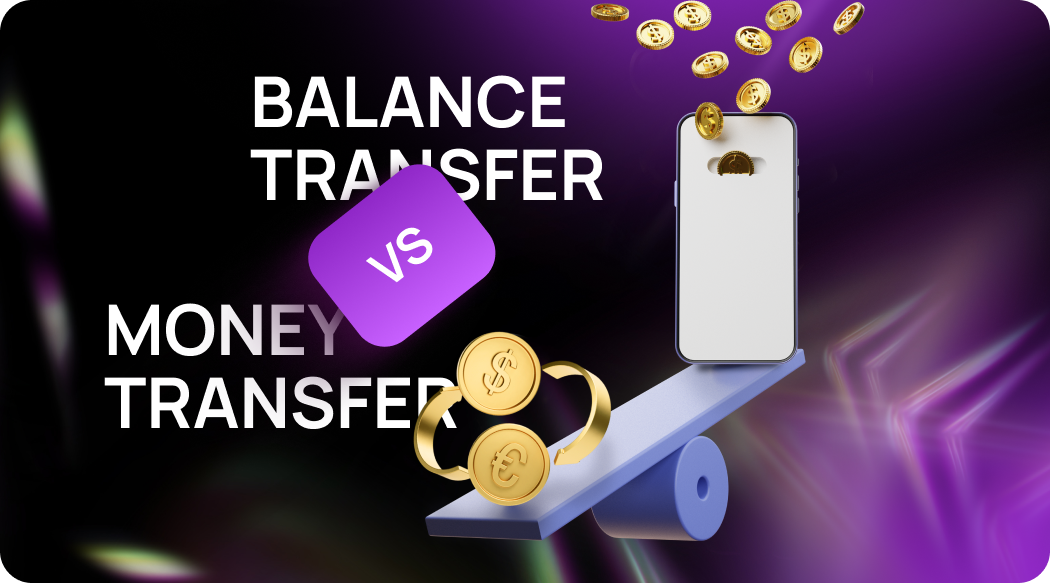What is the Difference Between Money Transfer and Balance Transfer
Learn the key differences between money transfer and balance transfer with our guide. Understand the benefits and drawbacks of each method to make decisions about managing your finances.
Money transfer and balance transfer are common terms used in personal finance, but they refer to different ways of moving funds between accounts. It’s important to understand the distinction between the two methods in order to make informed decisions about how to manage your finances effectively. In this article, we’ll explore the difference between a balance transfer and a money transfer and discuss the benefits and drawbacks of each. By the end of this article, you’ll have a clearer understanding of which type best suits your particular financial needs.
Understanding Balance Transfer
A balance transfer is the process of moving outstanding debt from one bank account to another one with a lower interest rate. This can be done for various reasons, such as consolidating debt or reducing interest charges.
To initiate the settlement, you’ll typically need to provide the recipient’s account information, such as their account number and bank routing number. You may also need to provide additional information, such as the recipient’s name and address. Depending on the banks involved, you may be able to initiate the instruction using online payment systems such as BACS or CHAPS payment, over the phone, or in person at a bank branch.
Steps to make a balance transfer:
- Check your outstanding debt balance and interest rate on your current account.
- Find a bank account that offers a lower interest rate.
- Open a new account with the bank and provide them with the details of the outstanding debt you want to move.
- Once your new account is open, you can initiate the payment through bank payment, BACS, CHAPS, or SWIFT payments.
- Ensure that you have provided accurate information for the recipient’s bank account and initiate the instruction.
- Wait for the transaction to complete and verify that the outstanding debt balance has been moved to your new account.
- Set up a repayment plan with the new bank to pay off the transferred amount before the introductory interest rate period expires.
Remember that the specifics of the process may vary depending on the banks involved and the countries they operate in. It’s important to carefully read the terms and conditions and to understand any fees or penalties associated with it.
Understanding Money Transfer
Money transfers allow you to send funds from one bank account to another. This method can be useful for paying bills or sending cash to friends and family.
To initiate this operation, you’ll typically need to provide the recipient’s account information, such as their account number and bank routing number.
Steps to make a money transfer:
- Determine the recipient’s bank information: account number, bank routing number, and the name and address of their bank.
- Check if there are any fees.
- Initiate the instruction. You can do it through your bank’s website, over the phone, or in person at a bank branch.
- Once you initiate the operation, it may take a few days for the funds to appear in the recipient’s account. Be sure to check with your bank for an estimated timeline for the transaction to be completed.
- Once the transaction is complete, you should verify with the recipient that they have received the funds.
If you need to make an international money movement, you may need to use a SWIFT payment or another international payment method, which can involve additional steps and fees. Be sure to check with your bank for specific instructions and requirements for international payments.
Comparing Money Transfer vs Balance Transfer
The main difference between both methods is what they are used for, as well as the fees applicable and clearing time.
| Balance transfer | Money transfer | |
| Purpose | To move debt from one bank account to another with a lower interest rate. | To send funds from one bank account to another, e.g., pay bills or send funds to friends and family. |
| Fees | Usually has a fee | May not have a fee |
| Clearing time | Several days | Almost right away |
So, if you need money to pay someone right away, a money transfer may be a better choice.

Which Option to Choose: Balance Transfer or Money Transfer?
When it comes to moving money, for example from one USD account to another, both options have different purposes and costs, so it’s important to understand the differences before choosing which one to use.
Balancing Debt with Balance Transfers
A balance transfer consolidates debt from multiple credit cards or loans into one account with a lower interest rate. For instance, if you have $5,000 in debt spread across three credit cards with varying interest rates, consolidating them into an account with a lower rate can save on interest charges and simplify debt management. However, this may involve a fee, typically around 3% of the transferred amount. Additionally, it may take several days to complete the transfer, requiring advance planning for impending payment deadlines.
It’s worth noting that balance transfers are typically facilitated through credit card companies rather than traditional bank transfers like BACS payments. If considering a BACS payment for money transfer, research the duration to ensure it aligns with your payment deadline.

Swift Payments with Money Transfers
A money transfer is useful for sending money to someone else or paying a bill quickly. For example, if you need to pay your rent by the end of the week, you could request a money transfer from your checking account to your landlord’s account. Some banks may charge a fee for this service, while others may not.
In either case, be sure to compare the costs and timelines of both options before making a decision.
Top Tips for Bank Transfers: Balance and Money
If you’re considering a bank transfer for balance or money, there are some key tips to keep in mind to make the process as smooth and cost-effective as possible.
For a bank transfer for balance:
- Compare the service offers from banks and credit unions to find the best interest rate and fee structure for your needs. Look for offers with a 0% introductory interest rate and no fee, if possible.
- Consider the timing. Be sure to plan ahead if you have a payment due date coming up. Also, keep in mind that some banks may have a limit on the amount you can send.
- Avoid new purchases. If you’re aiming to consolidate debt, avoid making new purchases on the credit card or loan until you’ve paid off the balance moved. This will help you avoid accruing more debt and interest charges.
For a bank transfer of money:
- Be sure to understand the fee structure before initiating a payment order.
- Double-check the details, such as the account information and routing number to ensure the funds go to the right place. Making a mistake can result in a delay or even loss of funds.
- Use a trusted source, like your bank or a reputable service. Be wary of scams or requests for payment through unfamiliar channels.
FAQ
What is the difference between a money transfer and a bank transfer?
A money transfer refers to the process of sending money from one account to another, either within the same bank or across different banks. For example, it can be a BACS payment. A bank transfer, on the other hand, refers to the movement of funds from one bank account to another, typically within the same bank.
What is the difference between a transfer and a balance transfer?
A transfer is a general term that describes the movement of funds from one account to another. A balance transfer, specifically, refers to the process of moving debt from one credit card or loan to another, typically with the goal of consolidating debt and/or taking advantage of lower interest rates or better terms.
What is an example of a balance transfer?
A good example is when you move your debt from one credit card that charges high interest to another credit card that charges lower interest. This can save you money on interest charges and help you pay off your debt faster. Another example is moving your debt from a personal loan with high interest to a credit card that charges lower interest. But be careful to check for any fees or other costs that might be involved.
What is a balance transfer card?
A balance transfer card is a type of credit card that lets you move your debt from one credit card or loan to another card. This can help you save money on interest charges if you have a lot of debt on a card with a high-interest rate. To do a balance transfer, you’ll need to give the new card your old card’s information and give permission to transfer the balance. But before you choose a balance transfer card, be sure to read the details carefully to understand any fees, interest rates, or other rules that come with the card.

